Installing bike racks has become an important part of making cities more sustainable. With rising awareness of the health and environmental benefits of cycling over driving, urban planners are focused on enabling residents to choose bikes for short trips. Bike racks provide convenient and secure parking spots so that more people can cycle instead of using cars.
As more commuters switch to bicycles, cities are seeing less traffic congestion and air pollution. Studies show switching from a car to a bike for short trips can reduce CO2 emissions by 21% per mile. Cities leading the cycling revolution are now exploring innovative ways to roll out more bike racks and complementary infrastructure.
Benefits of Bike Racks
Bike racks offer a range of benefits that encourage cycling and sustainable transport:
Provide Secure Bicycle Parking
Installing safe and convenient bicycle parking is crucial to encourage cycling uptake. Thoughtfully sited bike racks near shops, parks, transport links, offices, and other destinations allow people to securely lock their bikes without the fear of a stolen bicycle. This makes choosing to cycle much easier compared to hunting for street sign posts or other ad hoc parking locations.
Enable Short Trips by Bike
Bicycle parking distributed throughout a city facilitates cycling for quick trips under 2-3 miles instead of hopping in the car. By rolling out bike racks at regular intervals on streets and community hubs, cities allow residents to conveniently take care of errands or short visits via bike rather than relying solely on cars. Providing ample and secure bicycle parking makes riding bicycles the natural choice for short point-to-point trips.
Support Sustainable Urban Density
Compared to massive parking structures and lots designated for cars, bike racks allow for the efficient use of limited public space, given the smaller footprint of bicycles. Accommodating this sustainable transport option promotes denser and higher capacity development in central business districts and activity centers rather than lower-density suburbia. This denser development, in turn, facilitates healthier community spaces and neighborhood vitality by bringing more people onto the streets and public spaces. Bicycle parking unlocks sustainable density in an urban fabric.
Promoting Sustainable Transport
Thoughtfully locating bike racks can specifically promote sustainable transport use:
Multi-modal Commuting
Installing plenty of bicycle parking at major public transport hubs encourages multi-modal commuting by seamlessly allowing bike + train/bus trips. By providing such infrastructure that enables combining cycling with public transit, cities facilitate alternatives to single occupancy car trips for daily commutes and other trips. This multi-modal connectivity made possible through secure bicycle parking expands low-carbon transportation alternatives for residents.
Enable Employees to Cycle to Work
Bicycle parking and bike racks at commercial office buildings, campuses, and other workplaces play an instrumental role in incentivizing employees to cycle to work instead of relying on cars. Employees can scale cycling without worrying about safely securing their bikes all day. Visitor parking allows cycling to meetings or site visits as well. Providing such end-of-trip facilities and parking creates transportation alternatives for employees to ditch their car commutes.
Legitimize Cycling City-wide
A city-wide bicycle parking network with ample bike racks signals to all residents that cycling is an accepted and encouraged mainstream mode of transportation. It creates the perception that bicycles are not just recreational amenities but viable low-carbon transportation alternatives. This visibility and parking infrastructure legitimizes bikes as mainstream urban mobility options compared to cars or public transit alone. It spurs wider adoption across age groups.
Environmental Benefits
Widespread cycling and bike infrastructure provide significant environmental advantages:
Lower Traffic and Emissions
Studies show bike racks can increase cycling trips by 10-30%. Fewer car trips mean less traffic congestion and tailpipe emissions.
Reduce Environmental Impact
On average, just one day of traveling by bike instead of a car reduces transportation-related emissions by 67%. More bicycle parking racks facilitate this shift.
Counter Climate Change
Promoting low-carbon bike transport helps cities reduce their carbon footprint and environmental impact from transportation.
Community and Health Benefits
Beyond environmental gains, cycling and bike racks provide societal benefits:
Improved Public Health
Regular cycling has measurable health gains like lower BMI and reduced risk of heart disease and other activity-related illnesses.
Family-Friendly Transport
Bike racks create opportunities for short family trips to the park or market by bike rather than car.
Greater Community Feel
Increasing bicycle usage has demonstrated impacts on building a sense of community at the neighborhood level. With more residents cycling locally, there are more opportunities for interactions while traveling or when parked at community destinations. Studies have shown in neighborhoods with high bicycle and foot traffic, residents report stronger feelings of connectivity, more unplanned conversations, and an enhanced spirit of trust and vibrancy versus low-traffic neighborhoods.
Planning Bicycle Parking at Scale
For cities embarking on a major scaling of bicycle parking and cycling infrastructure, it’s crucial to conduct deliberate planning around ideal parking devices, spacing, commercial parking, safety precautions, and complementary options like bicycle share programs.
Careful thought must be put into selecting durable, secure bicycle parking devices and racks that lock the bike frame and wheels rather than just a wheel. These designs minimize theft and damage. Cities also need to designate ample bicycle parking spaces based on projected cycling uptake and major destinations. As a rule of thumb, at least ten high-quality parking spots should be planned for every 1,000 square meters of new commercial space.
New commercial property developments must also be required to provide visitor and employee bicycle parking to enable cycling patrons. Safety solutions like location visibility, cameras, and angled racks that allow scanning for thieves can further facilitate perceived and actual parking safety. This commercial bicycle parking combined with bike-share docks dispersed nearby creates seamless access options that minimize car trips. Following regulations for bike rack installation is key to scaling sustainable bicycle transportation.
Key Recommendations for Cities
For cities starting their bike rack and cycling infrastructure efforts, some best practices include:
Conduct Demand Studies
Assess current and projected cycling uptake and optimal bike rack locations based on demand. Prioritize building bicycle parking near key public transport links and office areas.
Install Dedicated Bike Lanes
Ensure cycling safety with special bicycle lanes protected from vehicle traffic by curbs, bollards, or elevation differences. Protected bicycle lanes, by solid lines or raised medians, will allow bicyclists to get to and from their destination safely.
Subsidize Commuter Bikes
Consider providing financial subsidies for commuter bike purchases to incentivize uptake. While this can require community board approval, Ebikes can further encourage new cyclists.
Set Vision Zero Targets
Follow cities like Oslo, Norway, and commit to a “Vision Zero” approach to eliminate all cycling traffic fatalities. Expand cycling safety through protected bicycle lanes, speed limits, and other calming measures near racks.
Bike racks serve an integral role in enabling the uptake of cycling as sustainable urban transportation. They provide a secure parking infrastructure for residents to choose safe, low-carbon, and healthy bike trips instead of carbon-intensive car journeys for short city trips. With environmental urgency mounting globally, forward-thinking cities are rolling out bike racks rapidly, alongside cycling safety measures like protected lanes. They provide a foundation for vibrant communities to embrace sustainable mobility.
About Furniture Leisure
Furniture Leisure is a leading provider of high-quality, durable commercial bike racks. For over 20 years, we have been the trusted partner for various public and private establishments needing secure and convenient bicycle parking infrastructure.
We recognize that more organizations today want to demonstrate their commitment to sustainability, health, and accessibility by enabling cyclists to visit their locations. Our wide selection of thoughtfully designed bike racks and parking solutions makes investing in cycling infrastructure simple and impactful.
Whether you manage an office building, apartment complex, retail center, school, park, or other public space, our commercial bike racks ensure you provide the critical parking amenities to facilitate employees and visitors opting for carbon-free transport. By protecting valuable bikes from theft while making end-of-trip facilities seamless for cyclists, our racks encourage sustainable mobility patterns.
At Furniture Leisure, our diversity ofcommercial bikeracks means we offer parking solutions in a wide variety of versatile styles, sizes, and durable materials sure to address any location's needs - from sleek, space-saving wall-mounted vertical racks to larger capacity racks that maintain order and access. Custom-branded racks are also available to reinforce your unique identity while signaling sustainability.
Choose the leaders in commercial bike parking infrastructure and let our expertise elevate your facilities. Contact Furniture Leisure today for cycling solutions tailored to your needs.
BrowseCommercial BikeRacks for Sale
Frequently Asked Questions (FAQs)
How do bike racks promote sustainable transportation?
Bike racks promote sustainable transportation by providing secure and convenient parking locations throughout the city. This enables and encourages residents to safely use bikes instead of cars for short urban trips of 1-3 miles.
Do bike racks help the environment?
Yes. Studies show a single mile traveled by bike instead of car reduces CO2 emissions by 21% on average. If bike racks facilitate just 10-30% of additional bike usage over car trips, that provides tremendous environmental benefit through avoided emissions and fossil fuel usage.
What are the benefits of cities installing bike racks?
Cities benefit in multiple ways. More cycling eases traffic congestion, reduces air and noise pollution, promotes vibrant public spaces and healthy lifestyles, and helps meet sustainability targets. It is also inexpensive for cities compared to other transport infrastructure, given the compact size of bike racks.






















































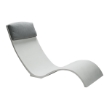







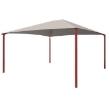

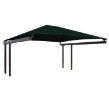

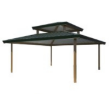
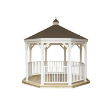
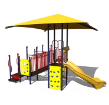












































Leave your comment